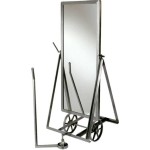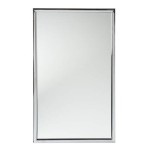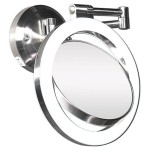How To Mirror An iPad Without Apple TV
Mirroring an iPad's display to a larger screen can be beneficial for various purposes, ranging from presentations and collaborative work to enjoying media content with a group. While Apple TV provides a seamless and direct solution for screen mirroring using AirPlay, it is not the only option available. There are several alternative methods that allow mirroring an iPad's screen without relying on Apple TV, catering to different needs and technical setups. This document explores these methods, outlining the required equipment, steps, and potential limitations of each.
Using a Lightning Digital AV Adapter
One straightforward method involves using a Lightning Digital AV Adapter. This adapter connects to the iPad's Lightning port and provides an HDMI output, enabling a wired connection to a television, projector, or monitor. This method is particularly reliable as it minimizes latency and avoids potential network connectivity issues.
Equipment Required:
- An iPad with a Lightning port (most iPad models prior to USB-C adoption).
- A Lightning Digital AV Adapter (official Apple adapter or a compatible third-party adapter).
- An HDMI cable.
- A display device with an HDMI input (TV, monitor, projector).
Steps for Mirroring:
- Connect the Lightning Digital AV Adapter to the Lightning port of the iPad.
- Connect one end of the HDMI cable to the HDMI port on the adapter and the other end to the HDMI input of the display device.
- Power on the display device and select the corresponding HDMI input channel.
- The iPad's screen should automatically be mirrored to the display device. If not, check the HDMI input settings on the display device and ensure the adapter is securely connected to the iPad.
Advantages:
- Reliable Connection: The wired connection minimizes the risk of signal drops or interference.
- Low Latency: Suitable for applications requiring real-time interaction, such as gaming or presentations with live annotations.
- Simple Setup: The process is relatively simple and requires minimal technical knowledge.
Disadvantages:
- Wired Connection: The physical cable restricts mobility and can be inconvenient in certain scenarios.
- Adapter Dependency: Requires purchasing and carrying a specific adapter.
- Charging Limitation: Some older adapters might not simultaneously charge the iPad, potentially limiting usage time for extended mirroring sessions. Newer adapters often include a Lightning port for simultaneous charging.
Troubleshooting:
If mirroring does not work immediately, ensure the HDMI cable is functioning correctly by testing it with another device. Verify the adapter is securely connected to both the iPad and the HDMI cable. Check the display device's input settings to confirm the correct HDMI channel is selected. If using a third-party adapter, ensure it is compatible with the iPad model and the iOS version.
Using a USB-C to HDMI Adapter (For Newer iPads)
For newer iPad models equipped with a USB-C port, the process is similar, but it involves a USB-C to HDMI adapter. This method provides the same advantages as the Lightning adapter in terms of reliability and low latency but adapts to the newer iPad's port.
Equipment Required:
- An iPad with a USB-C port (e.g., iPad Pro, iPad Air (4th generation and later)).
- A USB-C to HDMI adapter (official Apple adapter or a compatible third-party adapter).
- An HDMI cable.
- A display device with an HDMI input (TV, monitor, projector).
Steps for Mirroring:
- Connect the USB-C to HDMI adapter to the USB-C port of the iPad.
- Connect one end of the HDMI cable to the HDMI port on the adapter and the other end to the HDMI input of the display device.
- Power on the display device and select the corresponding HDMI input channel.
- The iPad's screen should automatically be mirrored to the display device. If mirroring does not occur, double-check all connections and input settings.
The advantages and disadvantages are largely the same as with the Lightning adapter, with the key difference being the port compatibility. The USB-C adapter replaces the Lightning adapter, making it suitable for newer iPad models. Ensure the chosen adapter supports simultaneous charging if extended mirroring sessions are planned.
Using Chromecast for Screen Mirroring
Chromecast offers a wireless screen mirroring solution, although it's not a direct mirroring process like AirPlay. It involves casting content from the iPad to the Chromecast device, which then displays it on the connected screen. This method requires a Chromecast device and a compatible app on the iPad.
Equipment Required:
- A Chromecast device (Chromecast, Chromecast Ultra, or a TV with Chromecast built-in).
- A Wi-Fi network.
- An iPad connected to the same Wi-Fi network as the Chromecast device.
- A compatible app on the iPad that supports Chromecast casting (e.g., YouTube, Netflix, Google Chrome).
Steps for Mirroring (Casting):
- Connect the Chromecast device to the HDMI port of the display device and power it on. Follow the on-screen instructions to connect the Chromecast to the Wi-Fi network.
- Ensure the iPad is connected to the same Wi-Fi network.
- Open a compatible app on the iPad that supports Chromecast casting. Look for the Chromecast icon (a rectangle with a Wi-Fi symbol) within the app.
- Tap the Chromecast icon and select the Chromecast device from the list of available devices.
- The app's content will now be displayed on the connected screen via the Chromecast device.
Advantages:
- Wireless Convenience: No physical cables are required, providing greater mobility.
- Wide Compatibility: Chromecast is widely supported by various apps and devices.
- Content Focus: Optimized for streaming video content, rather than mirroring the entire screen.
Disadvantages:
- App Dependency: Requires apps that specifically support Chromecast casting. Not all apps offer this functionality.
- Limited Full-Screen Mirroring: While some apps allow mirroring the entire screen, it's not as seamless or universal as AirPlay or wired connections.
- Network Dependency: Relies on a stable Wi-Fi connection; network congestion or interference can affect performance.
- Casting vs. Mirroring: Chromecast functions primarily as a casting device. Functionality to mirror the entire iPad screen is generally limited to the Google Home app and may not be as smooth as dedicated mirroring solutions.
Workaround for Full-Screen Mirroring with Chromecast:
The Google Home app allows for screen mirroring to Chromecast. However, this feature can be unreliable and may not provide the same smooth experience as AirPlay or wired connections.
Steps for using Google Home app for Mirroring:
- Download and install the Google Home app from the App Store.
- Ensure your iPad and Chromecast are connected to the same Wi-Fi network.
- Open the Google Home app and select your Chromecast device.
- Tap "Cast my screen" or "Cast screen/audio".
- Follow the on-screen instructions to start mirroring.
Keep in mind that the performance of this mirroring method can be affected by the Wi-Fi network's speed and stability. This approach is not ideal for applications that require low latency, such as gaming.
Using Third-Party Screen Mirroring Apps
Several third-party screen mirroring apps are available on the App Store that claim to mirror an iPad's screen to various devices, including Smart TVs and computers, without Apple TV. These apps often utilize local Wi-Fi networks to establish the connection.
Equipment Required:
- An iPad connected to a Wi-Fi network.
- A compatible receiving device (Smart TV, computer) connected to the same Wi-Fi network.
- A third-party screen mirroring app installed on the iPad (e.g., AirBeamTV, Reflector, Mirroring360).
- A corresponding receiver app (if required) installed on the receiving device (e.g., on a computer). Some Smart TVs may have built-in support, but often a companion app is needed for the TV as will.
Steps for Mirroring:
- Download and install the chosen screen mirroring app on the iPad.
- If required, download and install the corresponding receiver app on the receiving device (Smart TV or computer). Configure the receiver app as instructed.
- Ensure both the iPad and the receiving device are connected to the same Wi-Fi network.
- Open the mirroring app on the iPad and follow the instructions to connect to the receiving device. The app will typically scan for available devices on the network.
- Select the receiving device from the list. A connection request may need to be approved on the receiving device.
- Once connected, the iPad's screen should be mirrored to the receiving device.
Advantages:
- Wireless Convenience: No physical cables are required.
- Potential Smart TV Compatibility: Some apps claim compatibility with various Smart TV brands and models.
- Software-Based Solution: Leverages software for mirroring, potentially avoiding the need for additional hardware (besides the receiving device itself).
Disadvantages:
- Reliability Varies: Performance and reliability can vary significantly depending on the app, the network conditions, and the compatibility between the app and the receiving device.
- Potential Latency Issues: Wi-Fi-based mirroring can introduce latency, making it unsuitable for real-time applications like gaming.
- Security Concerns: Third-party apps may raise security concerns regarding data privacy and access to the iPad's screen content. It is important to research the apps and understand their permissions before installing.
- Paid Apps: Many of these mirroring apps require a purchase or subscription to unlock full functionality.
- Compatibility Issues: Compatibility with specific Smart TV models or computer operating systems can be limited. Thoroughly check compatibility before purchasing.
Considerations When Using Third-Party Apps:
Prior to purchasing a screen mirroring app, research the app's reviews, ratings, and developer reputation. Ensure the app is compatible with the iPad model and the receiving device. Pay close attention to user reviews regarding latency, stability, and overall mirroring quality. Check the app's privacy policy to understand how it handles user data. Trial versions (if available) should be considered before committing to a purchase.
These methods provide alternative solutions for mirroring an iPad's screen without relying on Apple TV. The best method depends on the specific requirements, available equipment, and tolerance for potential limitations. Wired connections offer reliability and low latency, while wireless methods provide convenience and flexibility. Third-party apps can extend compatibility but require careful consideration regarding performance, security, and cost. Ultimately understanding the pros and cons of each method allows for informed decisions based on individual contexts and needs.

5 Solutions To Airplay Mirroring Without Apple Tv 2024 Dr Fone

How To Connect An Ipad Tablet A Tv Without Apple Streaming Box

How To Connect An Ipad Tablet A Tv Without Apple Streaming Box

Ultimate Guide How To Screen Mirror Iphone Ipad Easily

Reflection App Use Airplay To Mirror Ipad Without Apple Tv

How To Mirror Iphone Tv Without Apple 3 Methods 2024

Reflection App Use Airplay To Mirror Ipad Without Apple Tv

How To Connect An Ipad A Tv Or Display Airplay Adapter

Screen Mirroring Ipad To Tv No Chromecast Wirelessly Apple Needed 2024

Use Airplay Mirroring On Lg Tv With Iphone Without Apple Here S How Redmond Pie








